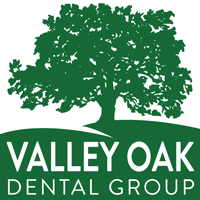Valley Oak Dental Group
While no face is perfectly symmetrical, people with uneven jawlines may be concerned about how asymmetry affects their oral health. Read on to learn what might be causing your facial asymmetry, whether or not it’s a problem, and how to treat it.
What Causes Facial Asymmetry?
As people age, their faces can naturally become more asymmetrical because while bone growth stops at puberty, cartilage growth does not. However, there are many other potential causes of facial asymmetry, such as secondary health issues, lifestyle factors, and trauma.
Health Conditions
People suffering from idiopathic masseter muscle hypertrophy, which cause an enlargement of muscles in the cheeks, can experience asymmetry.
Some conditions, like Bell’s Palsy, may weaken of paralyze one side of your face, so as you favor the stronger side of your mouth, facial asymmetry can develop.
Some spinal conditions, like torticollis, can cause abnormal positioning of vertebrae and neck muscles, thus causing a chain reaction in how you hold your head and how you use your jaws. Even if you don’t have a spinal condition, poor posture that’s never corrected can set you up for facial asymmetry.
Lifestyle Factors
Tobacco products contain chemicals that can constrict blood vessels, which can cause your cheeks to lose elasticity. People who smoke are at risk for osteoporosis and decreased bone density in their jaws, which can affect facial symmetry.
Even favoring one side of your mouth when chewing can lead to facial asymmetry as the tooth cusps will wear more on one side and facial muscles will be unbalanced in strength.
Trauma
If you’ve been in some kind of accident that’s affected your face, your jaws may be uneven after healing. If teeth are lost after an accident or from a procedural extraction, the bone in that area atrophies, thus changing the shape of your face.
When is Facial Asymmetry a Problem?
For some people, their facial asymmetry only affects their appearance and can be treated with cosmetic procedures. However, facial asymmetry can be a real problem if it causes functional issues. Sometimes facial asymmetry doesn’t even cause an issue, but is a side effect of an undiagnosed issue, such as obstructive sleep apnea or temporomandibular joint disorders (TMJD).
For instance, people who suffer from idiopathic masseter muscle hypertrophy not only have asymmetry, they usually have TMJD and bruxism (tooth grinding). People with TMJD may have difficulty eating, jaw pain, and clicking or locking jaw joints. People suffering from bruxism may be prone to decay or experience small enamel fractures from premature tooth wear.
Some facial trauma can result in not only facial asymmetry, but a condition known as TMJ ankylosis. Ankylosis is fusion of the TMJ to the jaw bones, which causes decreased range of motion and stiffening of the jaws. If a person is still going through puberty, then this kind of condition could cause an undergrowth of the mandible, or lower jaw.
When is Orthognathic Surgery a Good Option for Facial Asymmetry?
Orthognathic surgery, or jaw surgery, is usually a good option if you have extreme facial asymmetry or dental problems that cannot be fixed with orthodontic treatment or other dental procedures. For example, if you have asymmetry because of tooth loss, then bone grafts and dental implant may correct your problems without further surgical intervention.
If you don’t have extreme facial asymmetry, then your dentist may recommend non-invasive methods first. For instance, if your facial asymmetry causes TMJ issues, then your dentist may recommend treatments such as:
- Intra-oral massage
- Muscle relaxants, like Botox
- Cortecosteriod injections
- Mouthguards or other dental appliances
If these types of treatments aren’t helping you manage pain, then jaw surgery could be considered.
There is no one-size-fits-all jaw surgery. Your condition and symptoms will dictate the type of jaw surgery that you have.
If your facial asymmetry has caused sleep apnea, your doctor may perform a maxillomandibular advancement surgery. During this surgery, your dentist will cut both the upper and lower jaws and advance them forward. Pre- and post-operative sleep studies that measure your oxygen saturation are objective measures to see if the surgery helped.
If you have something like masseter muscle hypertrophy, your doctor may not advance the jaws like he or she would to treat sleep apnea. Instead, he may resection overgrown muscle and/or reshape and smooth bone enlargements on the lower jaw.
Whatever jaw surgery you opt for to treat facial asymmetry, you’ll need to do a lot of planning. You’ll need to make dental appointments so your dentist can take x-rays, impressions, and measurements of your head.
You may even need to get orthodontic treatment to get your teeth in the right position before surgery. And, like any other major surgery, you’ll have to set aside time off from work or school for adequate healing, especially if you have your jaws wired shut and need to stay on a liquid diet.
Reach out to us at Valley Oak Dental Group to learn more about jaw surgery and how to treat facial asymmetry.
Share Post
Search Post
Recent Posts








